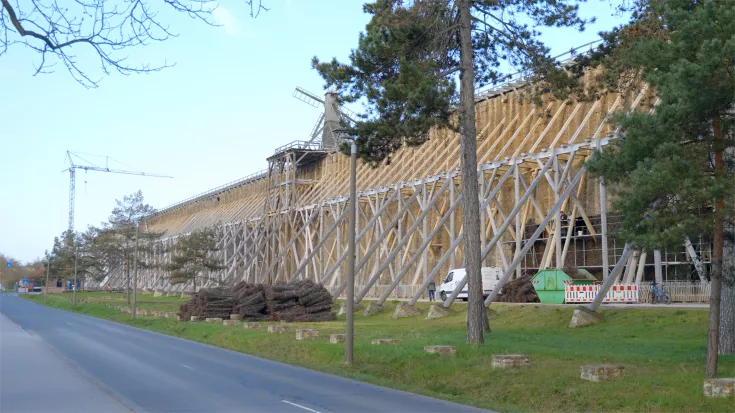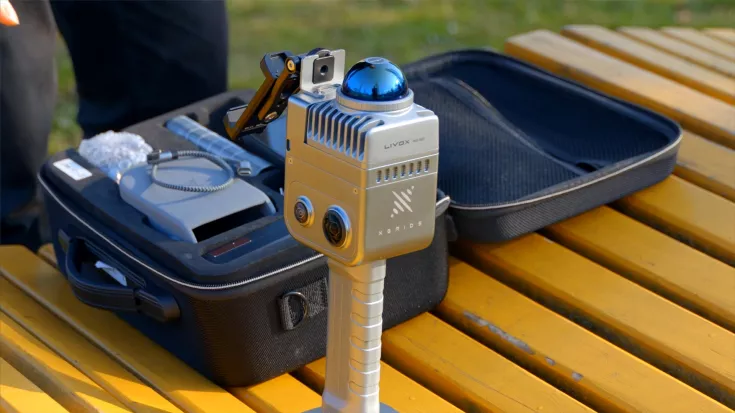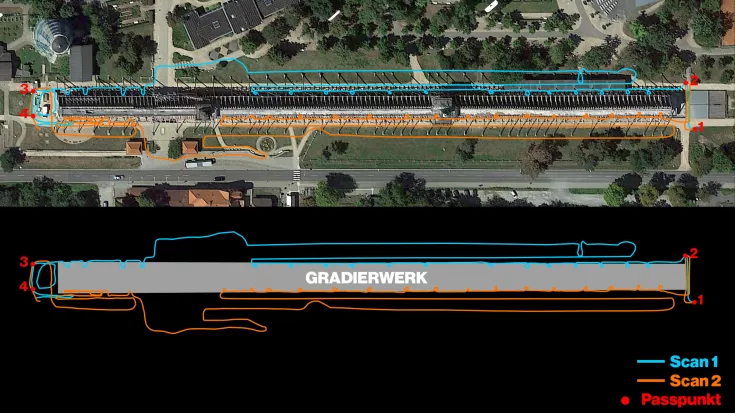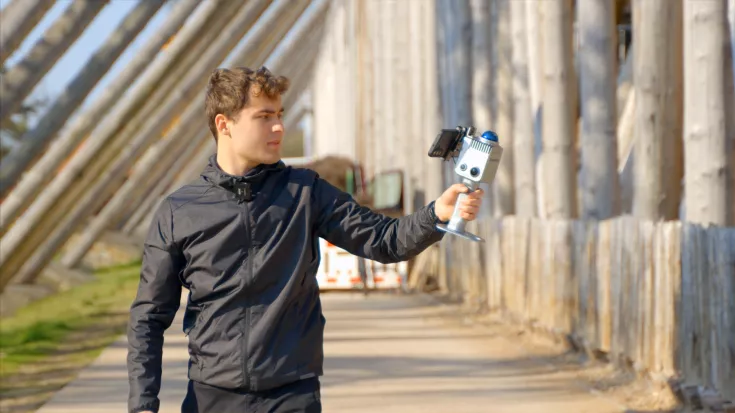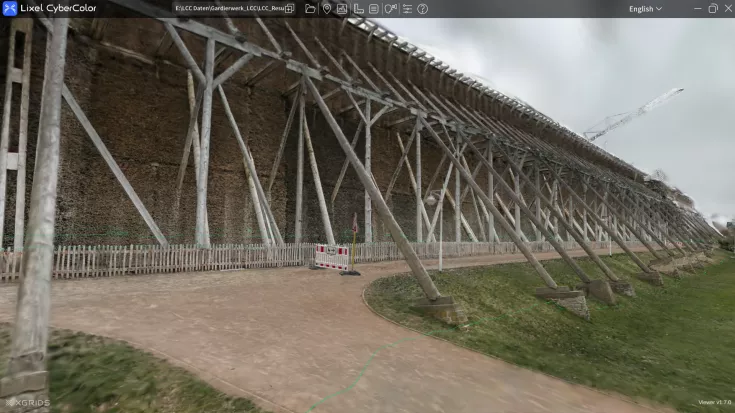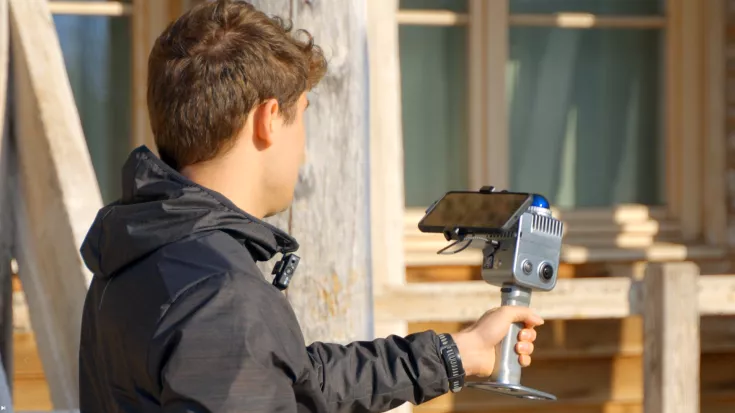300 m Long Graduation Tower Scanned with the Lixel K1
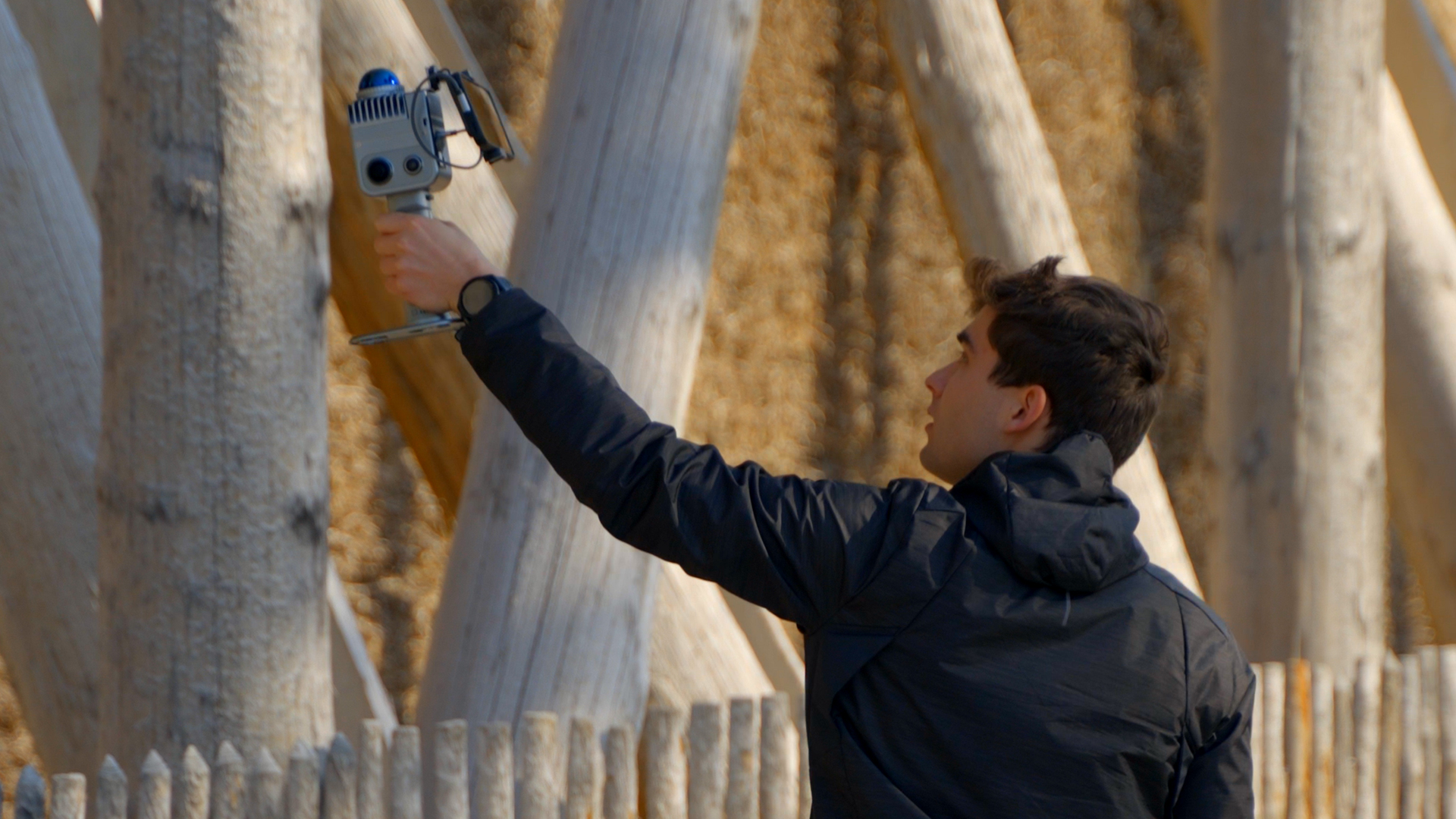
TitleA Tough Test for XGRIDS’ Mobile Scanner
We've already completed numerous projects using the Lixel K1 from XGRIDS – from small interiors to complex industrial halls. This time, we set ourselves a real challenge: to scan the 300 m long, approximately 12.5 m wide, and 16 m high graduation tower in Schönebeck-Bad Salzelmen using only two scans and merge them using the Map Fusion function in LCC Studio – with the goal of creating a high-quality Gaussian Splat visualization.
TitleThe Object: Graduation Tower in Schönebeck
Built in the 18th century, the graduation tower in Schönebeck-Bad Salzelmen was once the longest of its kind in Europe. Originally used for salt production – where brine trickled over blackthorn brushwood to evaporate – it now stands as a technical monument and serves as an open-air inhalatorium. Visitors can walk alongside the structure and enjoy the beneficial, saline-rich air.
TitleThe Scanner: Lixel K1 by XGRIDS
The Lixel K1 is a compact and powerful mobile laser scanner – perfect for large or hard-to-reach environments. Weighing just 1 kg, it is ideal for long-distance scanning and easily maneuverable in tight spaces. Inside, a Livox MID-360 sensor provides 40 laser lines, a range of up to 40 m, and a precision of around 3 cm.
Technical Specs at a Glance:
- Weight: 1 kg
- Resolution: 200,000 points per second
- Runtime: approx. 1.5 hours
- Sensor: Livox MID-360 (40 lines, 40 m range)
TitleProject Workflow
Planning
We decided to split the scan into two separate runs for two reasons. First, a single scan of the entire object would have been too long – we recommend keeping each K1 scan under 25 minutes to avoid drift. Second, since Gaussian Splat processing uses the raw point cloud, any inaccuracies would directly affect the result.
To align both scans precisely, we placed reference markers at all four corners of the tower.
Scan Execution
For stable data transfer, we connected the scanner to the smartphone in “Cable Mode.” We began each scan by recording the first two reference points, then focused on capturing the structure from a wide variety of angles – even stepping inside the timber framing to increase detail in the final model.
Once we completed the first half, we scanned the remaining two markers and repeated the process from the opposite side of the tower.
Processing in LCC Studio
Back at the office, we processed the data using LCC Studio by XGRIDS. Both raw data folders were fused using the Map Fusion function in the highest resolution setting.
Processing Specs:
- Build Quality: High
- Build Time: 19:55:47
- Number of Points: 66,697,087
- Total Collection Time: 36 minutes 35 seconds
TitleResults and Further Processing
The resulting Gaussian Splat scene was truly impressive. Since the method uses the raw point cloud directly, there’s no need to generate a separate point cloud from images – making this approach faster and more efficient than traditional photogrammetry, with significantly improved accuracy.
We imported the Gaussian Splat into After Effects using a plugin, allowing us to generate smooth animations and adjust the colors to achieve different visual styles.
TitleConclusion
Scanning the 300 m long graduation tower with the Lixel K1 was a complete success – and a real stress test for the mobile scanner. The combination of fast data capture, high range, accurate point cloud output, and seamless fusion in LCC Studio proved highly effective. What impressed us most was the level of detail and realism in the final Gaussian Splat – achieved with a device that fits in a backpack.
If you're looking for a powerful, portable LiDAR scanner for large-scale structures, the Lixel K1 is definitely worth considering.
